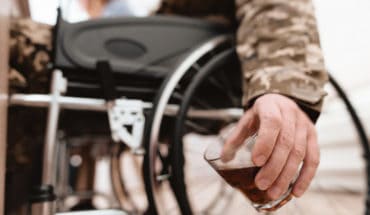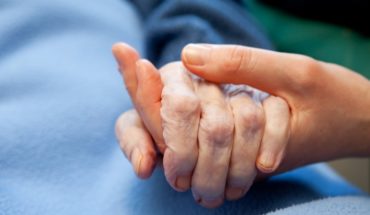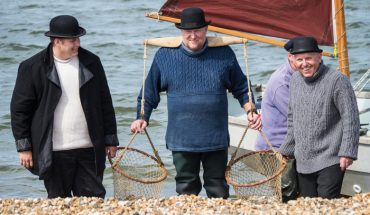I’ve been resuscitated three times in my life. As a nurse, I’ve attended countless resuscitation attempts. I’ve also attempted to bring members of the public back from the brink of death. Here’s my story.
Coming back from the brink
As a toddler, I choked on a boiled sweet. I became silent and turned purple. My quick-thinking mother (a carer for children with learning disabilities) picked me up by my feet and sharply slapped my back; the sweet came flying out. I was one of the lucky ones: two year old Francis Dean choked to death on a hard-boiled lolly; two year old Lyla Bradley choked on a piece of toast.
And it’s not only toddlers who are at risk. According to the National Safety Council, 4864 people died from choking in 2013, with 2751 of them being over the age of 75. It’s something I see too often in the nursing home where I work (though it has never yet resulted in tragedy): an elderly person losing the ability to swallow, forgetting to chew, or having loose fitting dentures that fail to break the food up sufficiently.
As a University student I suffered a grand mal seizure and stopped breathing. My mother came to the rescue again, resuscitating me before the ambulance arrived. It happened in Singapore, and I received first class hospital treatment, but it rather interfered with the holiday of a lifetime.
During a college firework party, the crowd rushed back to avoid a rocket headed in their direction. I was crushed at the bottom of a heap of people, at the bottom of a garden pond on a cold November evening. Adrenaline, not my mother, resuscitated me that time.
Bringing back from the brink
I’ve been the one to put the emergency call out in the hospital when cardiac arrest occurs. As the skilled team get to work with airways, defibrillators, cannulas and even thoracotomy scissors (for cases of open chest cardiac massage), I wait to receive instructions. Some patients have been revived, others not.
Life support presents different challenges on the street corner. A young man lost his lower leg following a motorcycle crash outside my house; my bathroom towels stemmed the flow of blood and perhaps helped save his life. My great aunt collapsed with an abdominal aortic aneurysm at a family funeral. I was one of the family members to assist in cardiopulmonary resuscitation, though she later died.
Even when attempts fail, it’s essential to be trained in basic life support and prepared to have a go. The British Heart Foundation state that 80% of cardiac arrests that happen out of hospital happen in the home, and it could be your home. The Resuscitation Council UK report that of the 60,000 emergencies attended to by UK ambulances in a year, less than half will have resuscitation attempted by a paramedic, either because the person has been dead for several hours or the person has recently died because nobody wanted to be involved.
Through its #Don’tStopAt999 campaign, the Red Cross is keen to increase participation in first aid training in schools, and for new drivers (calling for first aid skills to become a part of the driving test). Meanwhile, on October 16 of this year, the first European ‘Kids Save Lives: Restart a Heart Day’ took place and many schools held basic life support teaching sessions. The European Resuscitation Council recommends that all children, from the age of 12, should receive annual CPR training.
Modern technology is lending a helping hand to the Good Samaritans willing to become involved: a life-saving app designed to allow users to find the nearest defibrillator has just been launched by South Central Ambulance Service NHS Foundation Trust. It’s the first national register of every automatic defibrillator in the UK and can be found at scas.nhs.uk/savealife
Standing back
For some, there is no attempt to pull them back from the brink, and this is not because of a lack of confidence or conscience on behalf of the observer. Most residents in the nursing home where I work have a Do Not Resuscitate (DNR) Order on their notes, with the decision always made between the doctor, the family and the resident where possible. ‘Futility’ and ‘fragility’ are the most often cited reasons for these orders. These people lie in the ‘shadowy and vague boundaries which divide life and death’ as described by Edgar Allan Poe in ‘The Premature Burial’. Speaking of these boundaries he said “who shall say where one ends, and the other begins”? The DNR order acknowledges this mystery, and removes human intervention or interference from it.
This does not mean that we callously abandon the elderly resident as they breathe their last. I make it my aim that nobody ever dies alone. Family are called and if they can’t or don’t want to be present, I sit with them, talking to them, tending to them and observing any wishes they might have expressed, such as a favourite piece of music or clothing or a visit from a religious minister.
Even for those whom we do not resuscitate, I like to think that we do pull them back from the brink in a different way. Every time we mention their name or share a memory, they are brought back into our consciousness. The American novelist Carson McCullers captured this perfectly when she wrote “How can the dead be truly dead when they still live in the souls of those who are left behind?” Terry Pratchett evoked a similar idea when he said “No one is actually dead until the ripples they cause in the world die away”.
- Care Home Nursing: The World’s Largest Relay Race? - 13th August 2019
- Mouth Care Matters in Older People - 25th June 2019
- Dealing with illness in dreadful hot weather - 26th July 2018






